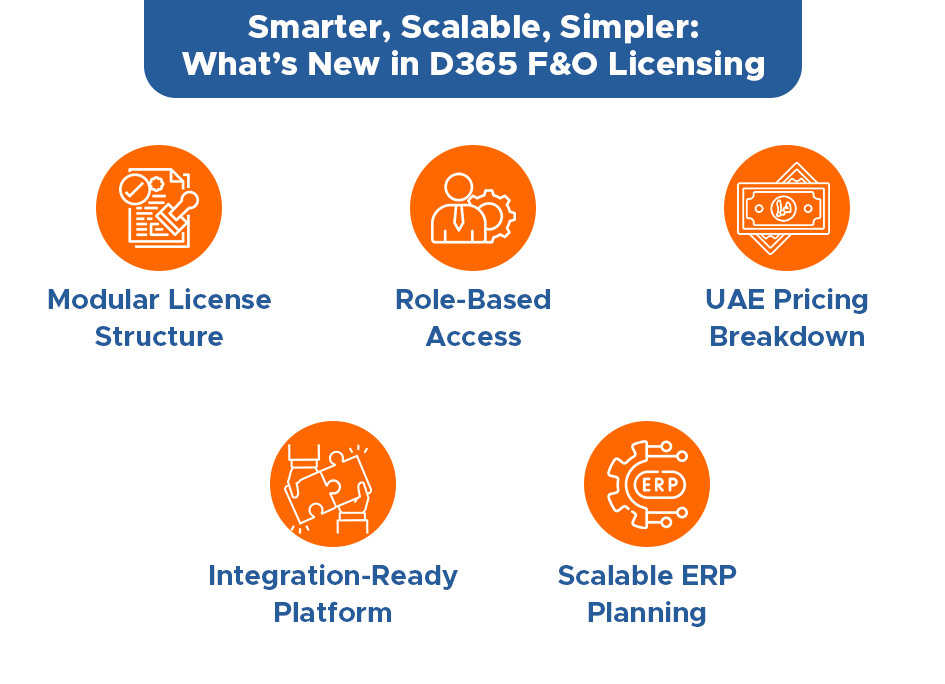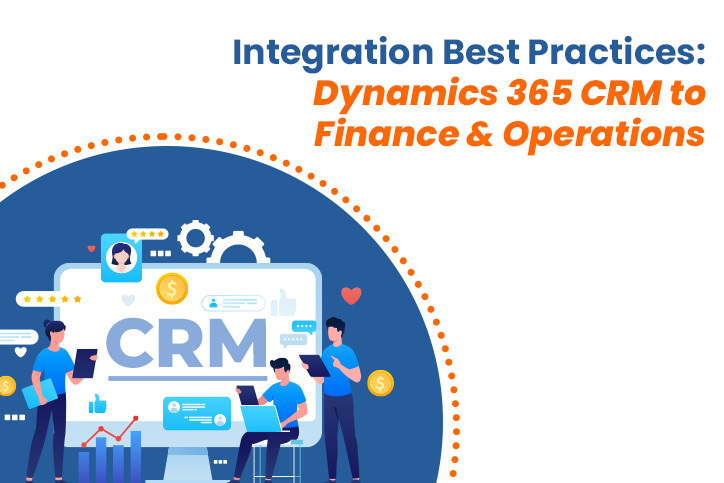Managing enterprise operations without clarity on costs can be a major roadblock for CIOs, CTOs, and operations managers. With Microsoft’s updated D365 F&O licensing model, businesses are asking: What does the new pricing mean for us, and how can we maximize value?
This blog breaks down the new Dynamics 365 Finance license pricing, explains how it impacts organizations in the UAE and beyond, and provides a practical framework to help leaders align licensing with ROI.
Why Does Change Matter Now?
Microsoft’s licensing updates are not just administrative changes; they directly affect how companies budget, scale, and manage their ERP systems. Many enterprises still operate on outdated ERP platforms or have experienced failed implementations, which makes the shift to Dynamics 365 Finance and Operations (F&O) an opportunity for modernization.
Without a clear understanding of costs, however, businesses risk overspending or under-utilizing licenses. Here’s why the new model requires closer attention.
- Paying for features that remain unused drains budgets
- Scaling without license planning leads to unplanned costs
- Compliance risks increase if the wrong licenses are chosen
The updated model aims to simplify these challenges by aligning costs with usage, giving companies the flexibility they need to grow efficiently.
Breaking Down the Updated D365 F&O Licensing Model
Before diving into pricing specifics, it’s important to understand how the new licensing model is structured. Microsoft has shifted toward a modular approach with user-based licenses, ensuring businesses only pay for what they truly need. This helps organizations match licenses more closely to their internal roles and processes.
Key Highlights of the New Licensing Model
- Modular Pricing: Choose applications like Finance, Supply Chain, or Commerce based on actual needs.
- Named User Licensing: Assign licenses to individuals for better accountability.
- Tiered Access: Select from Full, Operations, or Team Member licenses depending on user responsibilities.
D365 Finance and Operations Pricing in the UAE
While the model applies globally, pricing specifics vary by region, and businesses in the UAE must budget accordingly. Understanding these ranges ensures that organizations can plan ERP investments with precision, avoiding unnecessary overhead.
Here’s a breakdown of typical license costs in the UAE, along with their best-suited users.
How the Updated Model Impacts Businesses?
The implications of the new Dynamics 365 Finance license pricing go beyond cost alone. It affects how companies approach ERP strategy, integration, and adoption. By aligning licensing with actual usage, businesses gain flexibility and scalability, but only if the model is applied correctly.
Key business impacts include:
- Cost Transparency
Predictable, modular costs make financial planning easier.
- Scalability
Licenses can expand as teams grow without restructuring the system.
- Integration Flexibility
With alignment to the Dynamics 365 Finance and Operations integration service, businesses can connect D365 with CRM, HR, or custom platforms.
- Higher ROI Potential
Eliminating unused features reduces waste and boosts adoption across departments.
A Practical Framework to Approach D365 F&O Licensing
Navigating ERP licensing can be overwhelming, which is why having a structured approach is critical. A step-by-step framework helps leaders make decisions based on business needs rather than guesswork. Below is a proven methodology for ensuring success with D365 licensing.
The 5-Step ERP Licensing Success Framework
- Assess User Roles Clearly
Classify users as full, operations, or team members to avoid over-licensing.
- Map Core Business Needs
Choose modules like Finance, SCM, or Commerce based on immediate goals with a roadmap for future requirements.
- Forecast Scalability
Anticipate workforce and business expansion over the next 2–3 years to minimize sudden cost spikes.
- Evaluate Integration Needs
Plan connections with CRM, BI tools, payroll, or other systems early to avoid future delays and expenses.
- Validate ROI with a Pilot Rollout
Test licenses with a small group, measure efficiency, then expand deployment.
Common Pitfalls to Avoid
Even with clarity on pricing, businesses often make mistakes during license planning. Identifying and avoiding these pitfalls can save time and money while ensuring smooth adoption.
- Over-licensing: Buying expensive licenses for users who only need basic access.
- Ignoring compliance needs: UAE businesses must include VAT and accounting modules.
- Overlooking integration: Forgetting to budget for connectivity with existing systems.
- Short-term focus: Choosing minimal licenses today and facing higher costs later.
Actionable Tips for Decision-Makers
Beyond avoiding pitfalls, organizations should adopt proactive strategies when planning licensing. These practical steps ensure maximum ROI and smoother adoption.
- Audit Current Systems: List all existing workflows, tools, and users before migration.
- Engage Stakeholders Early: Involve finance, operations, and IT in licensing decisions.
- Leverage Cloud Flexibility: Opt for hybrid or cloud-first models for better scalability.
- Prioritize Training: Budget for user onboarding to speed up adoption and reduce errors.
Cost, Time, and ROI Considerations
Licensing is not just about expense; it’s about value. Understanding how costs translate into efficiency and ROI helps CIOs and CFOs justify investments. Most mid to large enterprises in the UAE experience measurable ROI within 12–18 months of deployment.
Benefits include:
- Reduced manual reporting
- Faster financial closes
- Streamlined supply chain operations
- Lower compliance risks
While initial costs may appear steep, the modular model ensures businesses only pay for what they use, avoiding unnecessary overhead.
Real World Example: Cutting ERP Licensing Waste by 22%
A UAE-based manufacturing enterprise recently migrated from a legacy ERP to Dynamics 365 Finance. By carefully mapping user roles and integration needs, they optimized licensing and achieved significant improvements.
- Reduced license waste by 22%
- Accelerated financial close cycles by 30%
- Enhanced cross-department visibility within the first quarter
This success story highlights how the right approach to licensing translates directly into measurable efficiency and cost savings.
Simplify Complexity with Expert Strategy
The new Dynamics 365 Finance license pricing gives businesses clarity, flexibility, and scalability. However, success depends on aligning licenses with business roles, integration requirements, and growth plans. Companies that approach licensing strategically unlock maximum value and ROI.
SoftArt has been a trusted partner in helping enterprises implement and optimize Dynamics 365 Finance and Operations services. With proven frameworks and expertise, the team ensures cost-effective ERP decisions tailored to each client’s needs.
Ready to simplify your ERP journey and maximize ROI?
Schedule a free consultation with SoftArt Solutions Inc. today.
Frequently Asked Questions:
Q. What is the updated D365 F&O licensing model, and how is it different from the old one?
Ans. The updated model uses modular, role-based pricing instead of a unified license, allowing businesses to buy only the needed apps and assign licenses by user roles.
Q. How does the new Dynamics 365 Finance license pricing affect businesses in the UAE?
Ans. Pricing varies by user type and module. UAE companies must consider VAT compliance and local integrations to avoid unexpected costs.
Q. Who needs a full Dynamics 365 Finance license versus a team member license?
Ans. Full licenses suit finance roles handling core functions; team member licenses fit users needing basic access, like report viewing.
Q. Can Dynamics 365 Finance and Operations integrate with other business systems?
Ans. Yes. It integrates with CRM, payroll, BI tools, and more. Early planning ensures smooth operations.
Q. What’s the best approach to selecting the right licenses for our organization?
Ans. Assess user roles, map needed modules, forecast growth, and pilot test to validate ROI before scaling.








